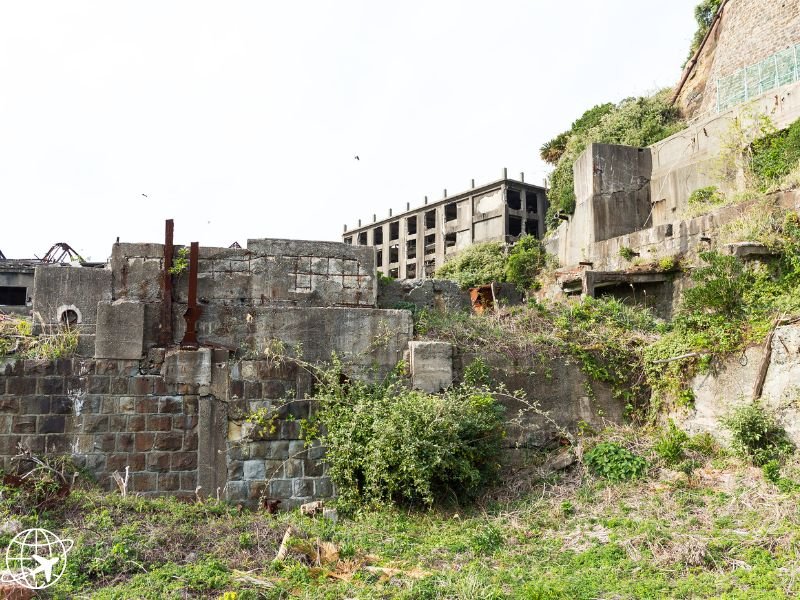Enchantment of Abandonment
Abandoned places evoke a profound sense of intrigue and wonder, drawing travelers and explorers alike into their haunting beauty. These locations, often rich in history, tell the stories of the people who once inhabited them and bear witness to the passage of time. The allure of these derelict sites lies in their ability to blend the remnants of the past with the encroaching reclamation of nature, creating a mesmerizing contrast that inspires curiosity. Whether it is a crumbling factory, a deserted town, or a forgotten amusement park, each abandoned place presents a unique narrative waiting to be discovered.
- Enchantment of Abandonment
- Pripyat, Ukraine: A Haunting Legacy
- Kolmanskop, Namibia: Nature's Embrace
- Hashima Island, Japan: A Sunken Industrial Empire
- The Salton Sea: A Vanishing Oasis
- The Lost City of Detroit, USA: Urban Decay Meets Art
- Bodie, California: A Ghost Town Preserved
- The Ruins of Tintern Abbey, Wales: Nature and History Intertwined
- Responsible Exploration: Awareness and Preservation
The charm of these locations does not solely stem from their decay but also from the rich tapestry of history they encapsulate. Many hold memories of bustling activity, joy, and sorrow—glimpses into days gone by that continue to resonate in the present. By visiting these sites, travelers have the opportunity to reflect on themes of nostalgia and impermanence, reminding us that nothing lasts forever. Moreover, the serene atmosphere often found within these locations offers an escape from the frenetic pace of modern life, inviting contemplation and silent appreciation.
However, it is essential to approach these sites with a sense of responsibility. Not all abandoned places are safe or legally accessible, which underscores the importance of ensuring proper permission is obtained before embarking on any adventure. Responsible tourism is paramount, not only to preserve these treasures for future generations but also to ensure the safety of those who venture into these hauntingly beautiful areas. Engaging respectfully with these locations enhances their mystique and contributes to a more meaningful travel experience, allowing one to appreciate the enchanting nature of abandonment.
Pripyat, Ukraine: A Haunting Legacy
Pripyat, a city that once thrived as a Soviet model town, stands as a haunting testament to the catastrophic events of the Chernobyl disaster in 1986. Originally home to around 49,000 residents, Pripyat was abandoned abruptly following the explosion at the Chernobyl nuclear power plant. This haunting location has since become one of the most visited abandoned places in the world, attracting those interested in the interplay of history, tragedy, and nature’s reclamation.
While the extensive area around Pripyat is still regarded as a no-go zone for the general public due to contamination risks, there are legal tours available for those wishing to experience this ghost town in a controlled and respectful manner. These tours are structured to not only ensure visitor safety but also to honor the past of the location. Tour guides provide insightful commentary throughout the experience, detailing both the life that once existed in this bustling city and the events leading to its sudden abandonment. From the iconic Ferris wheel to the remains of various public spaces, each stop tells a story of the lives interrupted by an unimaginable disaster.
The legal tours emphasize respect for the environment, with strict guidelines to minimize the ecological impact of visitors. Tourists are encouraged to explore the abandoned structures with caution, ensuring that they leave the sites as they found them. This approach not only preserves these poignant remnants of history but also fosters an atmosphere of reverence for the lives affected by the tragedy. As you walk through the dilapidated buildings, one can’t help but feel a connection to the past, rendered more powerful through the lens of responsible travel.
In conclusion, a visit to Pripyat serves as an eye-opening experience, shedding light on a pivotal moment in history while offering a rare glimpse into the once vibrant life lost to disaster. Those interested in exploring this abandoned place can do so through organized tours, making it a unique travel opportunity that balances curiosity with ethical considerations.
Kolmanskop, Namibia: Nature’s Embrace
Kolmanskop, located in the Namib Desert of Namibia, stands as a poignant testament to human endeavor and the relentless force of nature. Once a bustling diamond mining town in the early 1900s, Kolmanskop has since succumbed to the inexorable embrace of sand and time. As nature weaves its intricate tapestry around abandoned buildings, the spirit of this ghost town highlights the fleeting nature of prosperity and the eventual return of the environment.
Visitors to Kolmanskop today can witness the haunting beauty of derelict structures, many of which are partially buried in shifting dunes. The interplay of light and shadow within these walls creates an ethereal atmosphere, making the town a captivating site for photographers and curious travelers alike. This enchanting setting has taken on a life of its own, as vibrant sand dunes ripple through windows and doorways, symbolizing nature’s reclamation of the land.
In the broader context of abandoned places, Kolmanskop serves as a compelling reminder of an extraordinary past, beckoning those with a sense of adventure to explore the delicate balance between human achievement and nature’s enduring power. The unique atmosphere of this site invites reflection on both historical significance and environmental reclamation, making it a must-visit location for those drawn to the mystique of forgotten places.
Hashima Island, Japan: A Sunken Industrial Empire
Hashima Island, often referred to as Gunkanjima, is a significant testament to Japan’s industrial past. This small, abandoned island, situated approximately 15 kilometers from Nagasaki, was once a bustling coal mining community. At its peak in the 1950s, Hashima was home to thousands of workers, thriving in the shadow of its concrete high-rises. However, with the decline of the coal industry, the inhabitants gradually abandoned the island, leaving behind a haunting yet striking landscape rich in history.
Today, Hashima Island stands asa UNESCO World Heritage Site, symbolizing the culmination of Japan’s era of industrialization. For those intrigued by history and the concept of abandoned places, organized tours provide a unique opportunity to explore its eerie remnants. These tours are designed to offer safe and legal access to the island, ensuring that visitors can traverse its haunting ruins while respecting the site’s cultural significance. Guided expeditions enable tourists to gain insight into the daily lives of those who once resided there, weaving narratives of toil and human endurance into the ruins that remain.
As visitors walk through the desolate streets and crumbling structures, they encounter echoes of a bygone era, including the remnants of housing, the school, and even a movie theater. While it may seem unsettling to wander through such abandoned places, these tours maintain a careful balance between exploration and commemoration. They remind travelers of the complexities of history, urging respect and reflection rather than mere curiosity. In a world where the allure of long-forgotten locations often leads to clandestine adventures, visiting Hashima under organized tours provides a responsible approach, allowing one to engage with the past in a meaningful way.
The Salton Sea: A Vanishing Oasis
The Salton Sea, situated in California’s Imperial Valley, presents an intriguing and eerie landscape that is both a natural and man-made marvel. Formed in 1905 as a result of a catastrophic flood, the sea initially flourished as a resort destination, attracting visitors with its picturesque beaches and recreational opportunities. However, over the decades, the water levels began to recede, exposing the skeletons of once-thriving towns and transforming the area into a haunting reminder of its past glory.
Today, the abandoned places around the Salton Sea offer a unique opportunity for travelers interested in exploring the remnants of this once-vibrant community. The remnants of towns such as Bombay Beach and Salton City reveal stories of humanity’s fleeting grasp on nature. Visiting these sites allows tourists to delve into the fascinating history of the region while promoting a form of environmentally respectful tourism. Guests are encouraged to tread lightly, recognizing the delicate balance of the area’s ecosystem and ensuring that their exploration does not further damage the already vulnerable landscape.
While adventurers can access various locations around the shoreline, it is crucial to appreciate the rich cultural narrative encapsulated in the remains. The surreal scenery, characterized by salt-encrusted shorelines and dilapidated structures, provides an atmospheric backdrop for photographers and history enthusiasts alike. Moreover, understanding the factors that led to the degradation of such a once-thriving area fosters a greater appreciation for sustainability and environmental conservation.
In essence, the Salton Sea exemplifies the allure of abandoned places and the lessons they impart. By visiting these sites, travelers not only gain insight into the region’s complex past but also contribute to a deeper dialogue on ecological preservation and responsible tourism.
The Lost City of Detroit, USA: Urban Decay Meets Art
Detroit, once the vibrant heart of American industry, has become a canvas for urban decay, showcasing a unique beauty in its abandoned places. Among the city’s most iconic sites is the Michigan Central Station, a grand structure that has stood empty since 1988. Despite its derelict state, the station’s soaring architecture and intricate detailing are a testament to a bygone era and have inspired many photographers and urban explorers. The station is currently undergoing restoration, highlighting efforts to revive not only this historic landmark but also the spirit of Detroit itself.
Beyond the Michigan Central Station, Detroit is dotted with various other abandoned locations that are legally accessible for exploration. The Packard Plant, once the production site for one of America’s most esteemed automobiles, invites visitors to witness the remnants of its production lines, while the Fisher Body Plant offers a glimpse into the automotive industry’s past. These sites serve as important reminders of Detroit’s rich history, marked by both economic prosperity and decline.
Art has found a place within these decaying walls, creating a unique juxtaposition of urban decay meets creativity. Street artists have turned many abandoned spaces into urban galleries, adorning faded brick walls with vibrant murals. This artistic engagement not only brings new life to these locations but also fosters a connection between the past and present. Preservation efforts initiated by various community organizations aim to promote respectful visitation of these abandoned places, focusing on both education and protection.
As Detroit continues to evolve, the balance between recognizing its past and visualizing its future becomes essential. Visitors to these deserted locales can experience a profound narrative of resilience, where the beauty of decay intertwines with the hope for renewal, making it an extraordinary destination for travelers seeking both adventure and history.
Bodie, California: A Ghost Town Preserved
Located in the heart of the Sierra Nevada, Bodie, California, stands as one of the most captivating abandoned places in the United States. Once a thriving gold-mining town during the 19th century, Bodie is now a state historic park that has been preserved to captivate travelers interested in the rich narrative of the Gold Rush era. The town, which was founded in 1859, boasted a population of over 10,000 at its peak, featuring saloons, a school, and a rail station. Today, it exists as a museum of sorts, offering a glimpse into life during a time when dreams of fortune inspired countless individuals to journey westward.
The preservation of Bodie has been meticulously managed, ensuring that this enchanting ghost town remains accessible for travel enthusiasts. Designated as a California State Historic Park in 1962, Bodie is protected under strict regulations. Visitors can explore the once-bustling streets, iconic buildings, and remnants of the past, all while adhering to rules designed to maintain the integrity of the setting. This legal framework enables travelers to appreciate the historical significance of Bodie without the adverse effects of neglect or vandalism.
Responsible tourism practices play a crucial role in the sustainability of Bodie’s historical heritage. When visiting this fascinating abandoned place, it is paramount to respect the site by sticking to designated paths, refraining from taking artifacts, and minimizing environmental impact. This commitment not only aids in preserving Bodie for future generations but also ensures that the site’s enchanting character remains intact. Overall, Bodie serves as a compelling reminder of America’s gold-rush history and is a testament to the importance of preserving our past so that it can be appreciated by all.
The Ruins of Tintern Abbey, Wales: Nature and History Intertwined
Tintern Abbey, nestled in the picturesque Wye Valley, Wales, is one of the most captivating abandoned places that beckon travelers with its rich historical tapestry and breathtaking landscapes. Founded in 1131 by Cistercian monks, the abbey flourished as a center of learning and spirituality until its dissolution during the Reformation in the 16th century. Despite its abandonment, the grandiose remnants of the abbey continue to captivate visitors, embodying the juxtaposition of human craftsmanship and the relentless encroachment of nature.
Legally accessible to the public, Tintern Abbey is part of a well-managed heritage site, overseen by Cadw, the Welsh Government’s historic environment service. This ensures that visitors can explore the site thoughtfully, respecting the need for preservation and conservation. The crumbling walls and intricate stonework stand as testaments to the architectural beauty of the time, inviting travelers to reflect on both the monastic life that once flourished here and the natural forces that have slowly reclaimed the land. The delicate balance between allowing access for exploration and safeguarding the integrity of the site is paramount in maintaining its charm for future generations.
As you wander through the hauntingly beautiful ruins, surrounded by lush greenery, it becomes apparent that Tintern Abbey is more than just an abandoned place; it is a cultural landmark where history and natural beauty intertwine. The site attracts scholars, photographers, and history enthusiasts alike, all drawn to its serene atmosphere and profound sense of nostalgia. Engaging in responsible travel practices is essential to ensure this piece of history remains intact, allowing others to discover its stories and splendor. By doing so, travelers can enjoy the majesty of Tintern Abbey while contributing to its preservation.
Responsible Exploration: Awareness and Preservation
The exploration of abandoned places can be an alluring and adventurous activity for many travelers. However, it is essential to approach these sites with a sense of responsibility, recognizing the importance of preserving their integrity for future generations. Respecting local laws and regulations is paramount; unauthorized access to certain locations may be illegal and could result in fines or legal consequences. Therefore, before embarking on any journey, it is advisable to research the status of these sites and comply with any restrictions that are in place.
In addition to legal considerations, it is vital to engage actively with conservation efforts related to abandoned places. Many organizations and local communities work tirelessly to protect and restore these sites, and visitors can contribute positively by participating in clean-up events or supporting conservation initiatives. By being involved, explorers not only enjoy their travels but also help to maintain the sites that captivate their interest.
Moreover, practicing the principle of “leave no trace” is vital when exploring abandoned places. Visitors should be mindful of their impact on these environments. This means avoiding vandalism, not removing artifacts, and being careful to minimize disturbances to wildlife and vegetation. Engaging in respectful exploration ensures that these enchanting locations remain accessible and inspiring for future travelers.
Ultimately, responsible exploration fosters a greater appreciation for the histories and stories that these abandoned places tell. By adhering to ethical guidelines, visitors not only enrich their travel experiences but also play a crucial role in safeguarding these captivating sites, ensuring they remain a source of wonder for years to come. Through mindful actions and strong community engagement, travelers can help preserve the delicate balance between exploration and conservation.










